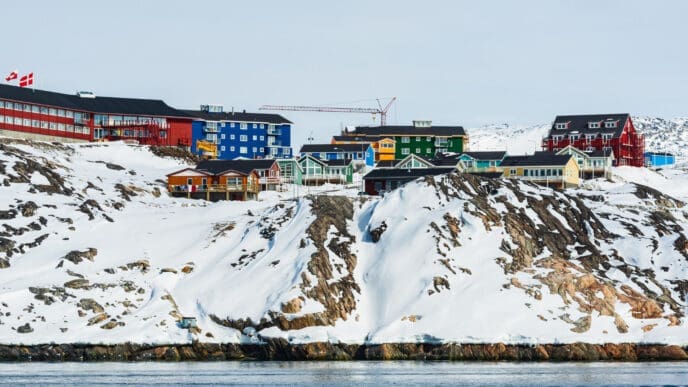Italy recently transferred 40 migrants, who were denied the right to remain in the country, to Italian-managed detention centers in Albania. This marks a notable instance of an EU member state relocating rejected asylum seekers to a third location that is neither their country of origin nor a transit nation. The group reportedly departed from the port city of Brindisi, though authorities have yet to confirm the migrants’ nationalities or provide further details.
The migrants are currently held at two Italian-built and operated facilities in Shëngjin and Gjadër. These centers were initially constructed to process asylum claims for individuals intercepted in the Mediterranean Sea. Since their launch in October, legal challenges have hindered the full operation of these centers, with some migrants being returned to Italy after courts refused to uphold their detention abroad. The duration of their stay in Albania remains uncertain, although Italian law allows for rejected asylum seekers to be held for up to 18 months pending deportation.
Legal and Human Rights Concerns
The transfers follow a recent directive from Prime Minister Giorgia Meloni’s government, ordering the Albanian fast-track asylum centers to also detain rejected asylum seekers facing deportation. This move has drawn criticism from rights groups and legal experts, who have raised concerns about its legality and the precedent it might set.
Meghan Benton of the Migration Policy Institute highlighted the need for Italy to demonstrate action with this costly structure. She noted that other EU countries, such as the Netherlands, have shown interest in similar arrangements with countries like Uganda. Francesco Ferri, a migration expert with ActionAid, criticized the move for lacking a clear legal foundation. He pointed out that there is no provision in Italian, EU, or Albania-Italy legislation that permits such deportation of rejected asylum seekers. Since signing the €800 million bilateral deal in November 2023, the centers have largely remained inactive due to legal challenges and pressure from human rights groups arguing that the agreement violates international law and endangers migrants’ rights.
Under the five-year agreement, up to 3,000 migrants intercepted by the Italian coast guard in international waters each month can be processed in Albania. Those granted asylum are relocated to Italy, while others face deportation directly from Albanian soil. However, the first three groups of 73 migrants transferred last autumn and winter were returned to Italy within hours, as magistrates refused to validate their detention outside the EU.
According to Italy’s Interior Ministry, 11,438 migrants have landed on Italian shores so far this year, which is fewer than the 16,090 recorded during the same period last year.
Context and Clarity
This development represents a significant shift in how EU countries may handle rejected asylum seekers. For communities in both Italy and Albania, the arrangement could influence local resources and public opinion on migration policies. The presence of detention centers in Albania may prompt discussions about the nation’s role in European migration strategies, potentially affecting its diplomatic relations with other EU states.
For the migrants themselves, this policy introduces a new layer of uncertainty, as the legal framework governing their status remains contested. The potential for extended detention periods in a third country raises concerns about their rights and well-being. Additionally, the financial implications of maintaining these centers and the broader impact on human rights advocacy in the region are likely to be subjects of ongoing debate.











